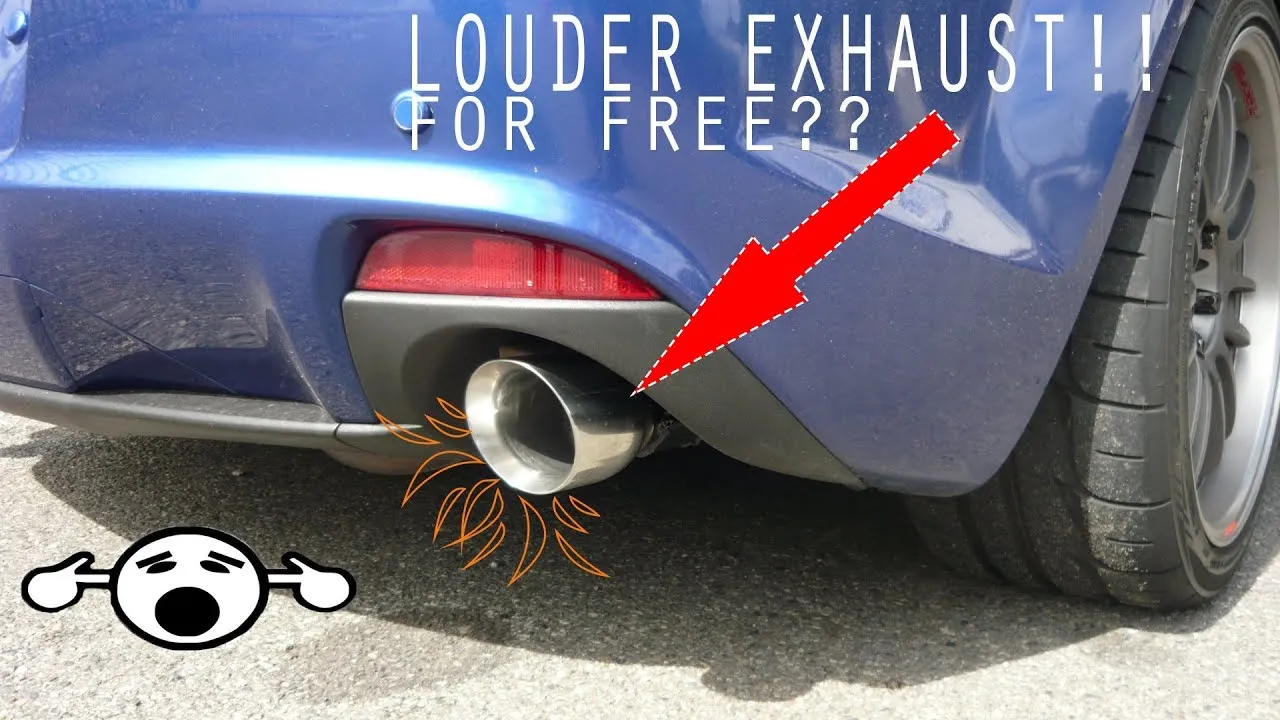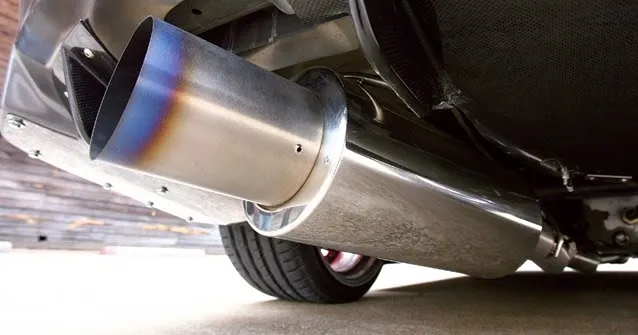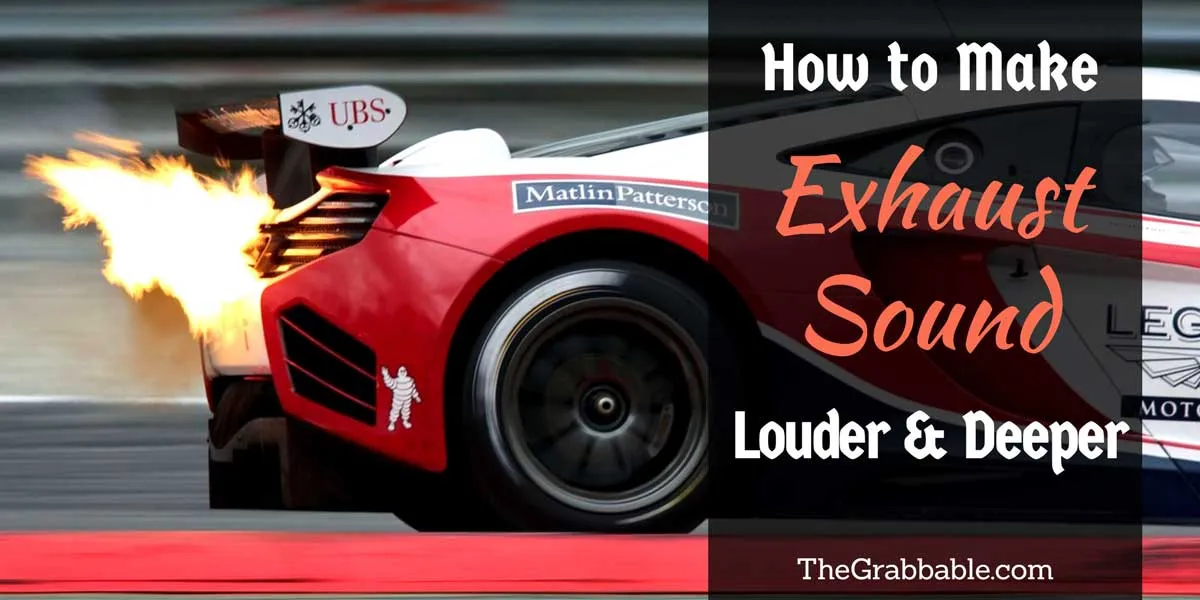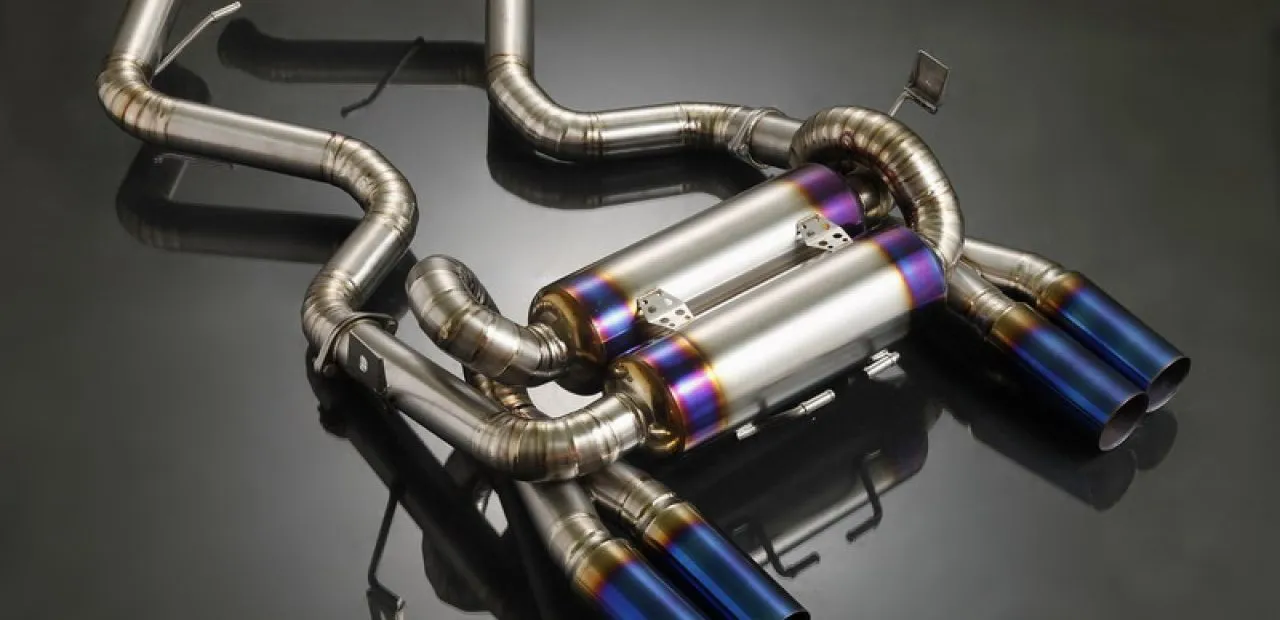Are you looking to give your car a more aggressive sound that turns heads? You’re in the right place! In this blog post, we’ll explore how you can make your car rumble and achieve that custom exhaust sound you’ve always dreamed of. From understanding exhaust systems to choosing the right modifications, we’ll guide you through each step of the way. Let’s dive into the world of automotive sound!
Understanding Exhaust Systems

Your car's exhaust system is more than just a series of pipes. It plays a crucial role in your engine's performance and sound. To appreciate how you can modify it, let’s break down the basic components:
- Exhaust Manifold: This is the first component that collects exhaust gases from the engine and directs them to the rest of the system.
- Catalytic Converter: This essential part reduces harmful emissions. Modifying this can affect sound but can also have legal implications, so proceed with caution.
- Muffler: This is where the magic happens! The muffler alters the sound of the exhaust gases. Different types of mufflers will produce different sounds—this is usually where you'll focus your modifications.
- Exhaust Pipes: These pipes carry the exhaust gases away from the engine. The diameter and material of the pipes can influence both performance and sound.
Now, you might be wondering why understanding these components is crucial. Well, each part contributes to the overall sound and efficiency of your vehicle. For instance, a larger diameter exhaust pipe can increase flow and create a deeper rumble, while a performance muffler can enhance that aggressive tone you want. Remember, it’s all about balance—too much noise can be just as undesirable as too little!
Ready to get started? Understanding your car's exhaust system is the first step toward achieving that perfect custom sound.
Also Read This: Behind the Price Tag: Why Are Getty Images So Expensive?
Choosing the Right Exhaust System

When it comes to making your car rumble and adding that custom exhaust sound, the first step is selecting the right exhaust system. With a plethora of options available, it can feel overwhelming, but don’t worry! I’m here to break it down for you.
Here are a few key factors to consider:
- Material: Exhaust systems are commonly made from stainless steel, aluminized steel, or mild steel. Stainless steel is more durable and resistant to rust, while aluminized steel is budget-friendly but less durable. Mild steel is the least expensive but can corrode quickly.
- Type of System: There are various types of exhaust systems, including cat-back, axle-back, and header-back. A cat-back system replaces everything from the catalytic converter back, providing a more significant sound improvement.
- Sound Level: Consider how loud you want your car to be. Some systems come with options for louder or quieter sounds. Look for terms like “muffler delete” for a more aggressive sound or “quiet series” for a more subdued tone.
- Performance Gains: Some exhaust systems are designed for performance enhancement. Look for products that promise increased horsepower and torque.
- Brand Reputation: Always go for reputable brands with good reviews. Brands like Borla, MagnaFlow, and Flowmaster are known for their quality.
Before making a purchase, it’s wise to do a bit of research or even chat with fellow car enthusiasts. Finding the right system can significantly enhance your driving experience!
Also Read This: Excluding Specific Terms from Search in Adobe Stock to Narrow Your Results
Installation Process

Now that you’ve chosen the perfect exhaust system, it’s time to dive into the installation process! While some DIY enthusiasts may feel confident tackling this on their own, others may prefer to enlist the help of a professional. Either way, let’s explore the steps involved:
- Gather Your Tools: You’ll need a basic toolkit, including wrenches, sockets, and potentially a saw or cutting tool if modifications are necessary.
- Lift Your Car: Make sure your car is securely lifted using jack stands. Safety first!
- Remove the Old Exhaust: Start by loosening the clamps and bolts holding the old exhaust in place. Carefully remove any hangers and take out the old system.
- Install the New Exhaust: Begin at the front and work your way back. Fit the new exhaust system onto the hangers and secure it with bolts and clamps. Be sure to follow the manufacturer’s instructions.
- Check for Leaks: Once everything is in place, start your car and listen for leaks. Look for any hissing or unusual noises that could indicate a problem.
- Lower Your Car: After confirming everything is secure and leak-free, lower your car and take it for a test drive!
And there you have it! Whether you choose to DIY or go to a professional, installing a new exhaust system can be a rewarding experience, resulting in that sweet rumble you’ve been dreaming of. Enjoy the ride!
Also Read This: How to Remove Your YouTube Account from a TV Using Your Phone
Tuning Your Exhaust Sound

When it comes to customizing your car, the sound of your exhaust can make a significant impact. Tuning your exhaust sound isn’t just about making it louder; it’s about achieving that perfect growl that matches your vehicle's personality. Here, we'll explore several ways to tune your exhaust sound to achieve the desired effect.
First off, consider the type of muffler you’re using. Mufflers are crucial in determining the sound your exhaust produces. Here are a few types:
- Chambered Mufflers: These create a deep, aggressive tone and are popular among muscle car enthusiasts.
- Turbo Mufflers: They offer a quieter sound with minimal back pressure, making them great for everyday drivers.
- Glasspack Mufflers: These provide a loud, raspy sound, perfect for those who want to turn heads.
Next, consider the pipe diameter. Increasing the diameter can lead to a louder sound but may also affect back pressure. It's essential to find a balance that works for your vehicle's engine performance.
Additionally, you might want to experiment with different resonators. Resonators work alongside your muffler to refine sound quality. They can help eliminate unwanted frequencies, resulting in a smoother exhaust note.
Lastly, tuning your exhaust can also involve adjusting the overall system. Adding or removing sections of the exhaust can change the sound and performance. So, don’t hesitate to get creative!
Also Read This: Effective Strategies for Promoting Your Portfolio on Behance
Maintenance Tips for Your Custom Exhaust
Once you’ve invested time and money into your custom exhaust system, you’ll want to ensure it lasts. Proper maintenance is key to keeping that rumble alive and well. Here are some tips to help you maintain your exhaust system:
- Regular Inspections: Routinely check for any signs of wear, rust, or damage. Look for leaks or holes, as these can alter the sound and performance.
- Keep It Clean: Dirt and grime can accumulate on your exhaust system. Regularly cleaning it not only keeps it looking good but can also prevent rust.
- Inspect Mounting Hardware: Ensure that all bolts, hangers, and clamps are secure. Loose components can lead to rattling sounds and may require replacement.
- Check for Exhaust Leaks: Listen for any hissing or unusual noises while your car is running. A leak can indicate a problem and affect your exhaust sound.
- Consider Professional Help: If you notice significant issues or can’t identify the problem, don’t hesitate to consult a professional. They can provide the expertise needed to keep your exhaust system in top shape.
By following these maintenance tips, you can ensure that your custom exhaust system remains in excellent condition, providing you with that satisfying rumble for years to come!
Also Read This: Using the Fortiguard Downloader Live Threat Map
7. Legal Considerations and Noise Regulations
When you’re thinking about modifying your car’s exhaust system, it’s crucial to be aware of the legal considerations and noise regulations in your area. Each state or region might have different laws governing vehicle noise levels, and it’s important to stay informed to avoid any potential fines or legal issues.
Here are some key points to consider:
- Local Noise Ordinances: Many cities have specific ordinances that limit the allowable noise level for vehicles. Be sure to research your local laws, as exceeding these limits could result in citations.
- Decibel Limits: Some states have established decibel limits for exhaust noise. Typically, the limit can range between 95 to 105 decibels, but this can vary significantly. Check your state’s requirements for precise figures.
- Emissions Regulations: Besides noise, you also need to consider emissions regulations. Modifying your exhaust system could impact your vehicle's emissions, and it’s vital to ensure that any changes comply with environmental laws.
- Vehicle Inspections: Certain states require periodic vehicle inspections that include emissions and noise testing. If your car fails these inspections due to an aftermarket exhaust, you may be required to revert to the factory system.
- Insurance Implications: Modifying your exhaust system can also have implications for your insurance policy. It’s a good idea to notify your insurance provider about any modifications to ensure you’re adequately covered.
In summary, always do your homework regarding local noise regulations and ensure your modifications don’t land you in hot water. It’s better to be safe than sorry when it comes to legal considerations!
8. Conclusion
Adding a custom exhaust sound to your car can be a thrilling way to enhance both its performance and your overall driving experience. However, as you delve into the world of exhaust modifications, it’s essential to keep in mind a few takeaways from our discussion.
Firstly, do your research. Understand the different types of exhaust systems available, from cat-back systems to headers, and how each can affect your car’s sound and performance. Additionally, consider the materials—stainless steel, aluminized steel, and titanium all have unique characteristics that impact both sound and durability.
Secondly, appreciate the importance of legal compliance. Familiarize yourself with local noise regulations and emissions standards to avoid any legal troubles. Not only could you face fines, but you might also need to revert your modifications during vehicle inspections.
Lastly, consult with professionals if you’re unsure about the installation process or the type of system that best suits your vehicle. Expert advice can save you time and money in the long run.
With these considerations in mind, you’re well on your way to giving your car the rumble you desire. So, roll up your sleeves, get to work, and enjoy the satisfaction of having a unique sound that reflects your style on the road!